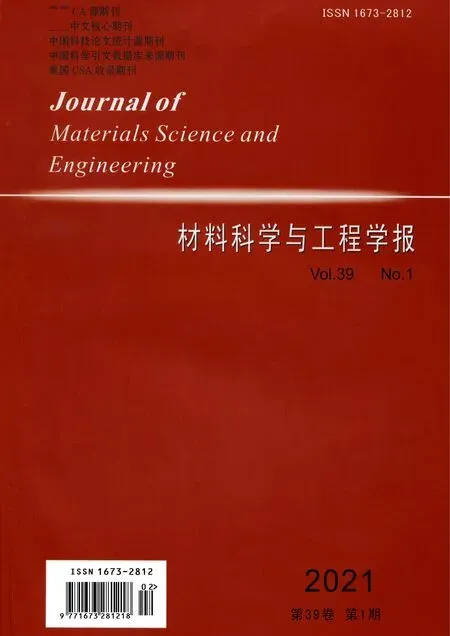Fabrication of Dispersion Ceramic Nuclear Fuel by a Stereolithography-based Addictive Manufacturing Process
LIAN Chao, CHANG Zhenqi, SUN Yongwen, GUO Lin, WANG Yuan
(Department of Engineering and Applied Physics, University of Science and Technology of China, Hefei 230026, China)
【Abstract】 The distribution of nuclear particles in dispersion-type nuclear fuel pellets is a crucial property since it strongly influences in-pile fuel behaviors. In this study, the stereolithography-based addictive manufacturing (SLAM) was introduced to the fabrication of the MgO-PuO2 dispersion nuclear fuel pellets to ensure a highly uniform distribution of the nuclear fuel microspheres in the pellet. The MgO matrix acts as a structural material that holds pellets in their three-dimensional shape and improves the heat transfer performance of the nuclear fuel pellet due to its high thermal conductivity. A detailed technical route and fabrication processes was described in this research. The influence of the size of MgO particle on the viscosity of the slurry and the thickness of the single slurry layer and the effect of the post-processing of green nuclear fuel pellets were also investigated. The density of MgO in final pellet achieves 3.15 g/cm3 (88.1% of the theoretical density) and the micro structure of MgO inert matrix was studied by scanning electron microscope (SEM). The cross-sectional views of the final pellet appeared that the distributioe of nuclear fuel microspheres in the pellet was very homogenous. The researches presented provide a way of improving the distribution of the fissile elements in the dispersion-type nuclear fuel pellets.
【Key words】 Dispersion nuclear fuel; 3d printing; MgO slurry; Stereolithography
1 Introduction
Nuclear fuel as the core component of the reactor, directly affects the entire reactor performance. At present, ceramic nuclear fuel is most widely used in nuclear power plants among many nuclear fuel types due to its high melting point and irradiation stability. However, the steep temperature gradient at the center of the internal ceramic fuel pellets for the low thermal conductivity of the ceramic material causes local overheating of nuclear fuel pellets and decreases in the safety threshold of the nuclear reactor. To improve the performance of the fuel pellets, the fuel pellets are fabricated by dispersing the nuclear fuel particles into an inert and high-thermal-conductivity matrix, name that the dispersion nuclear fuel. Surrounded by the matrix, nuclear fuel particles can deliver energy efficiently and the impacts of fission products accumulation, swelling[1-2]and fission gases are limited to areas near nuclear fuel to protect most matrix from irradiation damage, which makes nuclear fuel reach a high burn-up[3-5]. Now, dispersion nuclear fuel has widely used in test reactors and power reactors in many countries. Particularly, it is the main nuclear fuel type for accelerator driven sub-critical reactor system (ADS) which can transmute long-life radioactive minor actinides[6-9].
Compared with single-component nuclear fuel pellets, the fabrication of dispersion-type nuclear fuel pellet with double components has to undergo a process in which the fissile fuel particles are homogeneously dispersed in the matrix. However, the mechanical mixing as a conventional dispersion method cannot disperse the nuclear fuel particles in the matrix full-homogeneously and will definitely lead to the aggregation of nuclear fuel particles in the matrix due to differences in density and size of the two particles[10]. This non-uniform distribution fuel particles introduce uncertainties in predicting neutronic, thermal, and mechanical behavior, which limit the use of the fuel concepts from the detailed reactor design and licensing standpoint. The behaviors of nuclear fuel caused by non-uniform microstructure, notably swelling, movement of fission gases and thermal conductivity, are also unclear[11-13]. Particularly, the thermal conductivity of nuclear fuel pellets is of paramount importance for reactor safety. The problem of distribution of nuclear particles in pellets has attracted special attention of many researchers and practitioners in the nuclear field.
3d printing[14-15]is a kind of rapid prototyping technology, which manufacture three-dimensional objects by automatically accumulating materials layer by layer with the help of computer-aided software. Theoretically, it can manufacture objects with a precisely-controlled as-designed morphology. Recent years, 3d printing technology is rapidly and widely developed in various fields, however the application of 3d printing in dispersion nuclear fuel has not been reported. 3d printing technology consists of many types, and stereolithography-based addictive manufacturing (SLAM)[16-19]that can fabricate the ceramic product is one type of them. A classical fabrication processes for a ceramic object was as follows: The photosensitive resin as a binder was mixed with ceramic powder to form slurry. A photoinitiated polymerization occurred inside the resin by exposing slurry to the ultraviolet light, and the ceramic powder were bonded together indirectly[20]. Then, remove the binder from the green parts and sinter it to increase the density. SLAM was normally used to prepare ceramic objects with a single morphology. However, the morphology and structure of the dispersion nuclear fuel pellets were derived from an integration of the nuclear fuel particles and inert matrix, and it is a challenging work to apply this technology to the fabrication of nuclear fuel pellets. In this paper, MgO was used for an inert matrix because of its high thermal conductivity, high melting point and outstanding resistance to radiation, and ZrO2(no radioactivity) microspheres as a surrogate of PuO2particles were used for the imitated fissile particles. The MgO-based dispersion ceramic nuclear fuel pellets with a highly uniform distribution of nuclear fuel microspheres were fabricated by SLAM. The influences of the preparation parameters on the pellet performance was studied in detail.
2 Fabrication of green nuclear fuel pellets
2.1 Materials
MgO powder with a d50=5 μm was used as an inert matrix in the dispersion nuclear fuel pellets. UV adhesive which consists of monomer and photo initiator was used as the photosensitive resin. ZrO2microspheres with a d50=300 μm were used as a surrogate of the fissile particles.
2.2 Fabrication process
In this research, the dispersion ceramic nuclear fuel pellets with an as-designate distribution of nuclear fuel microspheres (shown in Fig.1) were fabricated, and a flowchart of the fabrication processes was appeared in Fig 2. The UV adhesive was mixed with the MgO particles together to form a ceramic slurry that was used as an inert matrix of the green pellets. A direct photo-shaping was used to project the image onto the slurry to shape the layer since direct projection is faster and more accurate[21-22].

Fig.1 Compute-aided design of distribution of nuclear fuel microspheres in a dispersion-type nuclear fuel pellet
The entire fabrication process of the green body was operated on a self-made device and its schematic is shown in Fig.3. For a distribution of the nuclear fuel beads, the pits used to place fuel beads were formed in each layer by a pressing mold that was precise-controllably moved by a machinery automatic system. The specific fabrication processes were as follows: First, the ceramic slurry was deposited on the platform from the slurry tank, and the slurry turned into a thin layer with the help of a doctor blade. The pressing mold was controlled and moved to press the slurry layer. After the mold was removed, uniform pits appeared on the surface of the layer since the surface of the pressing mold has many bumps. Then, the slurry layer was exposed to UV light. The layer containing as-designated pits of MgO inert matrix were produced after MgO powder were bonded by the light-cured resin in the slurry. Next, the nuclear fuel microspheres (300 μm) were filled in the pits by another doctor blade. After cleaning the excess microspheres and lowering the height of the platform, repeated the above steps until obtaining the entire green nuclear fuel pellets. A dispersion nuclear fuel pellet with a uniform fissile distribution was finally prepared after the hot-pressing and sintering processes of the green pellets.

Fig.2 Flowchart of the fabrication of the dispersion-type nuclear fuel pellets by SLAM processes
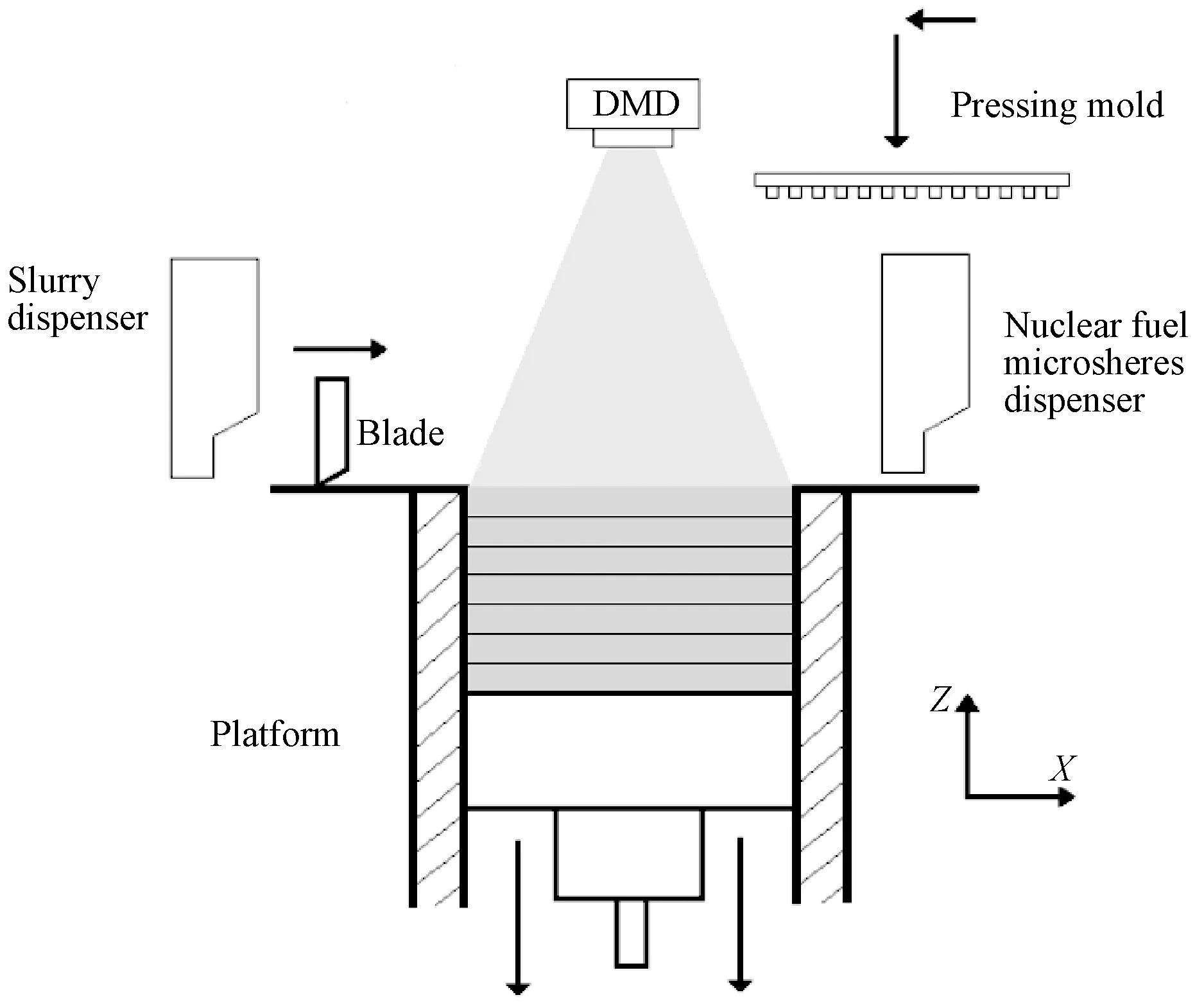
Fig.3 Schematic of the manufacturing device applied to fabricate the pellets
2.3 Ceramic slurry
The formation of the green pellets were strongly affected by the component and flow behavior of the slurry in SLAM technology. MgO slurry used in this experiment is a mixture of MgO particles and UV adhesive. In the process of fabricating green body, the UV adhesive will be polymerized under the irradiation of UV light and bond MgO powder to form a layer. In the next step, the binder needs to be removed and the green body will be sintered at a high temperature to obtain the final object. Therefore, the content of various substances in the slurry is directly related to the quality of the final ceramic part. The solid loading and viscosity are two key parameters of the slurry. Generally speaking, the higher the solid content, the better the quality of the ceramic part. The lower solid loading causes the higher shrinkage of the fuel pellets during the sintering process and disarranges the designed distribution of the nuclear fuel microspheres in the pellets. However, higher solid content increases the viscosity of the slurry and makes the recoating process difficult to carry out[23]. An appropriate viscosity of the slurry is needed to meet the requirements of the recoating processes and can be obtained by adding dispersant and solvent to the slurry[24]. Further, Compared with the conventional fabrication of a single component object with a slurry coating→layer curing→slurry recoating process by SLAM, the as-prepared sample in the experiment was fabricated with a slurry coating→model pressing→layer curing→slurry recoating process. For a formation of the pits in each slurry layer used for loading nuclear fuel beads, an uncured slurry layer had to be pressed by a mold to form the pits on the layer surface. If the solid loading is too low, the slurry has a strong fluidity, and after the pressing mold was removed, the fluidity leads to the collapse of the formed pits. The structure of slurry layer was destroyed and the nuclear fuel microspheres cannot be arranged at as-designed location in the layer. Therefore, the slurry requires a high solid content and low viscosity.
To meet the requirement of the slurry, a mount of large-sized MgO microspheres (100 μm) were added to the slurry and the viscosity of the MgO slurry can be greatly reduced without lowering the solid loading. Also, since the MgO powder (5 μm) is very loose, its apparent density is only 12% of the theoretical density. If MgO microspheres (relative density 49%) is added to the slurry, the density of the slurry will increase and the volume shrinkage of green body will be reduced during the post-process. However, to ensure the smoothness of the surface of the slurry layer and the size accuracy of the green body, the proportion of the MgO microspheres in slurry should not be too high. In the research, MgO microspheres (100 μm) and MgO powder (5 μm) were mixed in a mass ratio of 3.75∶1 with a three-dimensional mixing device TURBULA-T2F (Willy A. Bachofen AG Maschinenfabrik), and then, UV adhesive (38 wt%) was added to the mixture (62 wt%) to form the slurry that can meet the operating requirements.
2.4 Single layer thickness
The high size accuracy of the green body requires small thickness of a single layer. However, a small layer thickness will pose significant challenge in the recoating of the high viscosity sluury and reduce the production efficiency. During the fabrication processes, the MgO slurry layer was exposed to UV light and the reflection of light by MgO particles weakened the penetration of UV light, so too thick slurry layers cannot be bonded together. Therefore, a suitable layer thickness is needed to enable the nuclear fuel microspheres (300 μm) to be laid into the slurry layer.
Four green bodies were fabricated with single layer thickness of 100, 200, 300, 400 μm as shown in Fig.4, and the exposure time to UV light of single layer of each body was 30 seconds. It can be found from the figure that the green bodies with layer thicknesses of 100 and 200 μm are in good condition and no obvious stratification occurs. Green bodies with layer thicknesses of 300 and 400 μm are clearly delaminated, but the layers are still bonded together without detachment. After the green body was finished, the debinding need to be under pressure conditions and the layers will still be bonded together in this step, so there is no need for a strong adhesion between the layers. Also, after the pressing mold was moved from the layer, the surface of the slurry has a series of pits, which greatly increases the curing area to promote the reaction inside the slurry. Besides, an increase in layer thickness is also advantageous for recoating and fabrication efficiency. Therefore, setting the layer thickness to 300 μm is appropriate.

Fig.4 Green bodies (diameter 5 mm) were fabricated by accumulating layer by layer and the single layer thickness of the four bodies were 100 μm (a), 200 μm (b), 300 μm (c) and 400 μm (d), respectively
3 Post-processing of green nuclear fuel pellets
The green pellet fabricated by SLAM is a mixture of MgO particles, nuclear fuel microspheres and UV adhesive. In order to achieve dense pellet, the post-processing consists of debinding and sintering. In the process of debinding, organic matter was removed from the green pellet by hot-pressing and the temperature should be controlled at around 450 ℃ to decompose adhesive. Then, the pellet was densified by high-temperature sintering.
Debinding of green pellet to achieve desired properties is a challenging work. In the stage, the release of a large amount of gas generated by the decomposition of organic matter can easily cause deformation and swelling of the green parts. Also, direct heating will expand the gaps between the layers of the green pellet and the final pellets will crack or delaminate, which is unacceptable. Hot-pressing can avoid these problems effectively, so the green pellet was transferred to a hot-pressing furnace (GWL-RY60T) for debinding. The green pellet was heated to 450 ℃ at a heating rate of 5 ℃/min for 1 h, and an excellent pellet were obtained. Also, compared with the way of heating without pressure, it can increase the density and strength of the pellet.
Finally, the pellet was placed in a furnace for sintering. In this process, the heating rate strongly affected the mechanical properties of the pellets since the growth of MgO crystals and the volume shrinkage of the pellets were accelerated with increasing temperature, thus a relatively low heating rate was needed. The optimized heating mode based on the above discussion is set as shown in Fig.5. The pellet was heated to 600 ℃ at a heating rate of 1 ℃/min, then to 1000 ℃ at 2 ℃/min and kept it for an hour for sintering. Finally, heated it to 1600 ℃ at a heating rate of 3 ℃/min and kept it for 3 h. All post-processing of debinding and sintering were carried out in the air.
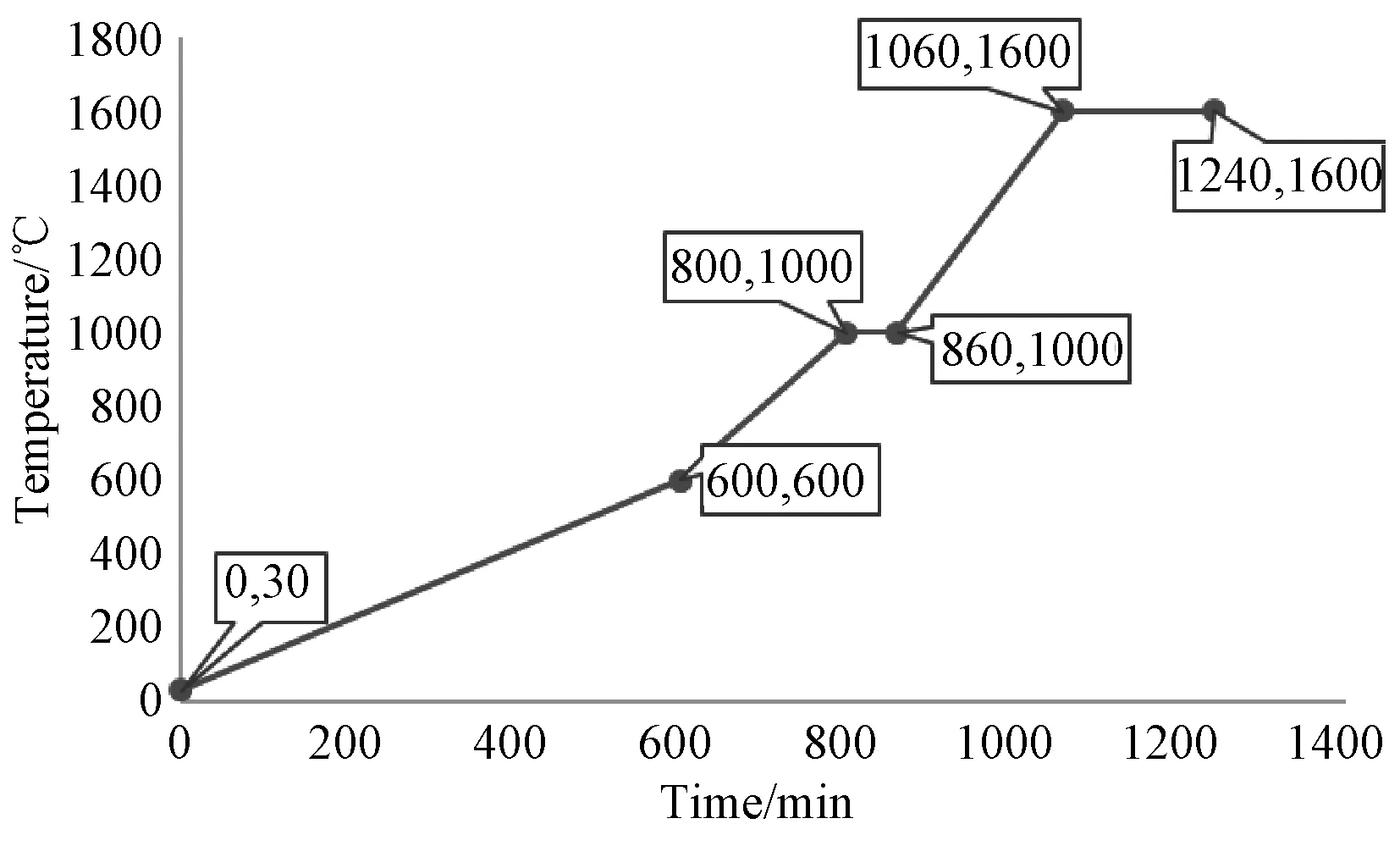
Fig.5 Sintering mode of the post-processing of the green parts
4 Characterization of the pellets
Nuclear fuel green pellets were accumulated layer by layer using 3D printing technology, and the internal structure of the nuclear fuel pellet is determined by each layer. In order to ensure a uniform distribution of the nuclear fuel microspheres in the pellet, the microspheres must be dispersed uniformly in the single layer. A few of pits were formed on the surface of the layer (Fig.6(a)) by an application of the pressing mold for placing the nuclear fuel microspheres. It can be seen from Fig.6 that the distribution of the nuclear fuel microspheres is uniform as the design and no aggregation occurs. ZrO2beads were dyed in black to facilitate identification from a white MgO matrix.
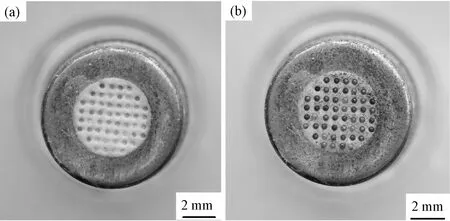
Fig.6 Optical images of the layer in the pellets: (a) layer with pits, (b) layer with microspheres
The height of the whole green pellet is 10.5 mm, and each layer thickness is 0.3 mm. After the hot-pressing processes, the height of the pellet was reduced to 5.08 mm, and the diameter of the pellet was constant. The compressed fuel pellets were finally sintered at 1600 ℃. The height of the final pellet was shrunk to 4 mm during the sintering process, and the diameter was contracted to 4.38 mm. The overall shape of the pellet was still cylindrical and shrunk evenly after sintering step (Fig.7). The density of MgO calculated was 3.15 g/cm3(relative density 88.1%), indicating that there were some pores in the pellet, and the SEM image of MgO in the sintered pellet (shown in Fig.8) also confirmed the results. The volume ratio of the nuclear fuel microspheres in the pellet was only 7.3%, however the ratio can be improved by reducing the distance between the nuclear fuel microspheres.
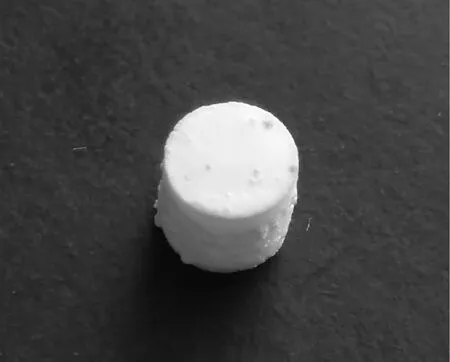
Fig.7 Optical image of the sintered pellets

Fig.8 SEM image of MgO in pellets
To obtain the distribution of the nuclear microspheres in the pellet, the fuel pellet was cut longitudinally and horizontally respectively and polished. From Fig.9 (a,b), it was found that although the volume from the green pellet to the final pellet is reduced by 71%, the distribution of nuclear fuel microspheres is the same as the compute-aided design (CAD) model, and is of excellent uniformity. Keeping the same volume ratio of nuclear fuel microspheres to dispersion matrix as that in SLAM fabrication, the fuel pellet was prepared by a conventional fabrication process of mechanical mixing, pressing and sintering, and the distribution of the nuclear fuel particles were shown in Figure 10. It appeared that the nuclear fuel microspheres were heterogeneously dispersed in the matrix and some microspheres were even agglomerated. Compared with the conventional fabrication process, the superiority of the SLAM lies in that the position of nuclear fuel microspheres in the pellet can be controlled, and accordingly the distribution of the nuclear fuel microspheres in a dispersion-type fuel pellet can be improved by SLAM technology easily. But more than that, nuclear fuel microspheres can be arranged in pellets in any order as design, which is impossible with conventional methods.

Fig.9 Internal structure of pellet fabricated by SLAM: (a) cross-sectional view of the pellet, (b) longitudinal section view of the pellet

Fig.10 Cross-sectional view of a pellet obtained by conventional mechanical mixing
5 Conclusion
A novel stereolithography-based addictive manufacturing process has been presented for fabricating dispersion-type nuclear fuel pellets with a highly homogeneous distribution of nuclear fuel microspheres in the inert matrix. To satisfy the requirements of the slurry rheological properties, the low viscosity of the MgO slurry without a decrease in the solid loading were prepared by adding some 100 μm of MgO microspheres to the slurry. Each layer thickness of the slurry is set to 300 μm to enable the nuclear fuel microspheres to be placed into the slurry layer and make the recoating process easy to carry out. After hot-pressing and sintering, the final nuclear pellet were obtained and the density of MgO matrix achieved to 3.15 g/cm3. The internal structure analysis of the dispersion-type fuel pellet showed that nuclear fuel microspheres were distributed uniformly.

